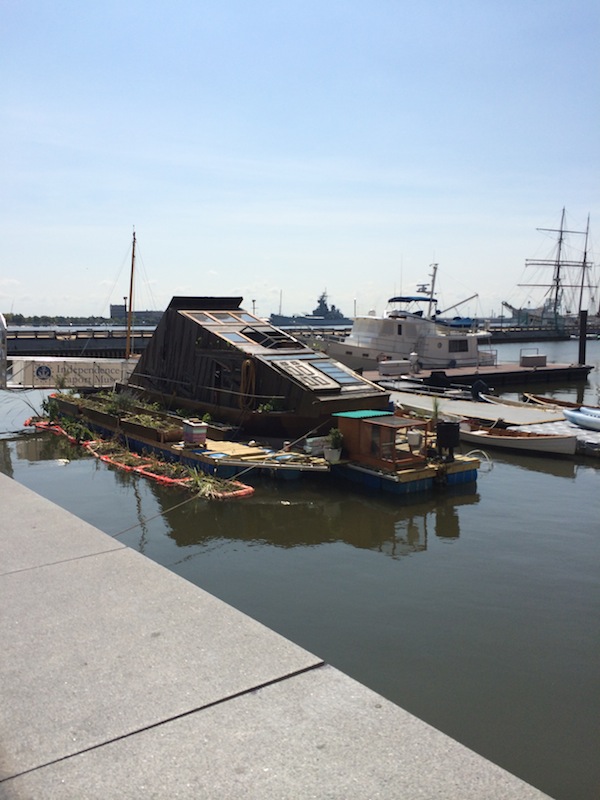
Inside WetLand
By Mary Mattingly, FringeArts.com
Mary Mattingly and a group of artists, engineers, and environmentalists have been working together for the past two months constructing the floating, mobile habitat, and public art installation, WetLand. A completely autonomous ecosystem, WetLand has rainwater collection and purification, greywater filtration, dry compost systems, outdoor vegetable gardens, live chickens, and bees. Last Friday, the installation debuted to the public with an opening reception. For the following month WetLand will host a variety of workshops, performances, and events. WetLand is free and open to the public seven days a week from 10am–5pm. Mattingly hopes to see it transform into an interdependent community space. Here is her account of the last month:
WetLand, Photo by Ellie Clark
July 29, 2014
I’ve been building out WetLand for 27 days, working closely with between 3-8 people daily. A nautical engineer, professional fiberglass painter, and professional boat shipper were brought on. A group of artists and art facilitators build and create the space together. We learn new skills as we go, and we teach each other what we’ve learned. Our individual hands are allowed to show in and on the structure. While WetLand began as a concept, at Day 27 it’s truly a collaboratively created sculpture. People have initiated structural and artistic changes to create something that not only functions as a sculpture but also as a home. Because some of us are already living onboard as we build, the space takes on characteristics of our own use and we create around it. Jointly learning to create a human-made wetland, and host animals, has expanded our networks well beyond the formative group of collaborators and into the fabric of the city. Karla Stingerstein currently works closely with several nurseries to implement different growing spaces on WetLand, while Esteban Gaspar Silva is engineering tunnels and bridges throughout the space, from one level to the next. On site now, Greg Lindquist and Anna Ekros both envision different areas of the sculpture, using reclaimed wood and salvaged paint to begin articulating specific areas. Cohesiveness is created by repeating elements from one area through the next. Tongue-and-groove flooring recycled from a gym in Iowa comprises the flooring in the main space and also WetLand’s façade. Simultaneously building and living with a group is an intimate experience and a lead-in to the public launch on August 15, when we will invite strangers into our space and mutually share ideas.
Recent Content
-
Artsarticle ·
-
Artsarticle ·
-
Artsarticle ·
